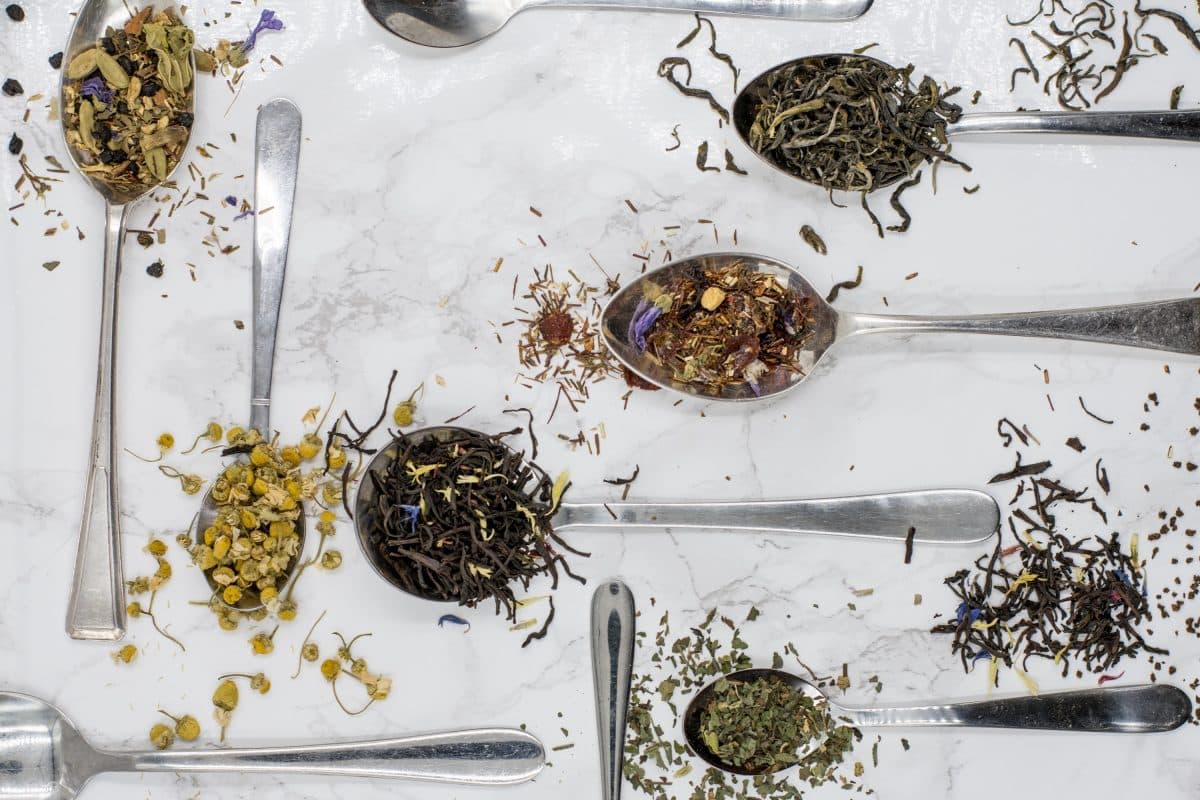Tea is the aromatic infusion of dried, cured leaves from the shrub Camellia sinensis.
Black tea is the term for leaves that have been fully fermented before drying. Familiar black varieties include: Darjeeling, Assam; bergamot scented Earl Grey; mild Ceylon; thick-bodied Keemun; and smoky Lapsang Souchong.
Green teas are steamed and dried but not fermented.
Oolong teas are partially fermented and are said to combine the characteristics of both black and green tea.
Read more about Tea and Health.
Use tea leaves, such as black tea or lapsang souchong, to smoke foods like fish, chicken, or vegetables. Tea smoked chicken is a popular dish that is part of traditional Chinese cuisine, specifically the Sichuan cuisine.
This excellent and surprisingly easy recipe for Tea Smoked Chicken requires only a few ingredients.
Some other ways to use tea in cooking:
- You can infuse tea leaves in oils, such as olive oil or sesame oil, to create flavorful bases for dressings, marinades, and stir-fries. Heat the oil gently with the tea leaves for a few minutes, then strain the leaves and use the infused oil in your recipes.
- Grind tea leaves along with other spices to create custom spice blends. For example, you can combine tea leaves with cinnamon, cloves, and cardamom for a warm and aromatic blend that can be used in baking or to season meats and vegetables.
- Mix ground tea leaves with herbs, spices, salt, and sugar to create dry rubs or marinades for meats, poultry, or tofu. The tea will add depth and complexity to the flavor profile of your dish.
- Brew tea leaves in liquids like broths, stocks, or sauces to add subtle flavors. For example, steep tea leaves in hot vegetable broth or coconut milk, strain them out, and use the infused liquid as a base for soups, curries, or sauces.
Other hot water infusions or decoctions are called tisanes. The term comes from Old French, that in turn originated via Latin (ptisana) and Greek for barley water.
The taking of tea is deeply engrained in British culture. By 1768 The East India Company was importing 10 million pounds of tea a year to Britain. Destination amusements called “Tea gardens” flourished in the early nineteenth century in Marylebone, Chelsea and Hampstead offering concerts, fireworks and games taking tea popularity to another level. It was, however, Anna, Duchess of Bedford who, in 1840, created the tradition known as afternoon tea.

